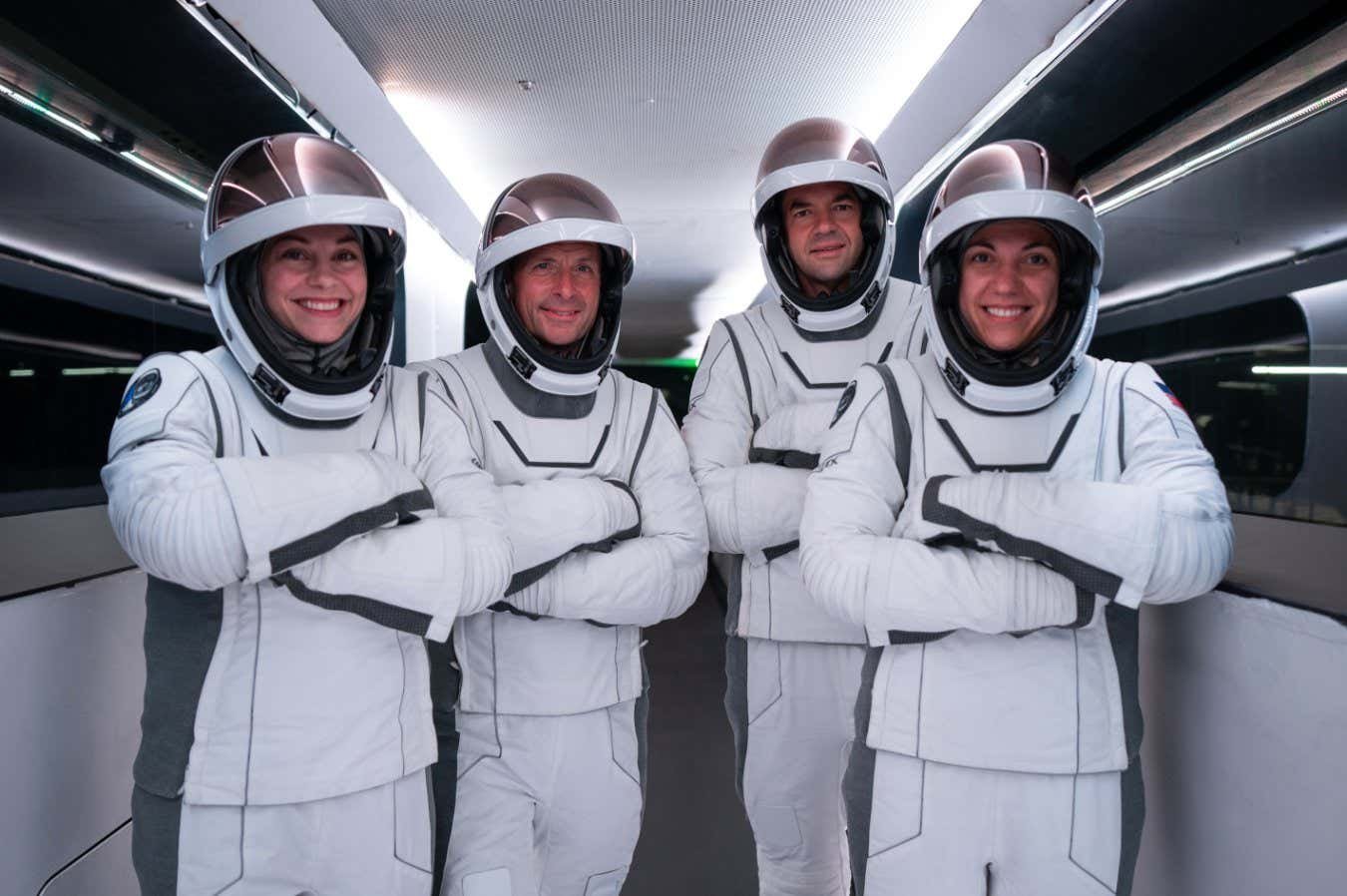
The four crew members of the Polaris Dawn mission
SpaceX
SpaceX is getting ready to execute the first ever civilian spacewalk. Until now, every time a human has left their spacecraft to venture into the void of space it has been a government-trained astronaut – but the Polaris Dawn mission, scheduled to launch on 30 August or later, is changing that, making it perhaps the most dangerous civilian space mission ever.
The main source of risk comes from the fact that the Crew Dragon, which will carry the four explorers into orbit, lacks an airlock. When astronauts perform spacewalks, or extravehicular activities (EVAs), on the International Space Station, they don their suits and enter a sealed room. The air is then sucked out of that room before they head into open space, keeping the rest of the station sealed and full of air.
The Polaris Dawn crew are due to spend up to five days in orbit. On the third day, the entire spacecraft will depressurise for about 2 hours, so even the two crew members who aren’t leaving the capsule will have to wear specialised EVA suits. It isn’t an entirely new protocol – many of NASA’s Gemini and Apollo spacecraft in the 1960s and 70s didn’t have airlocks – but it is significantly more risky than an EVA where the astronauts have a relatively safe airlock to retreat to in case of any issues.
“You’re throwing away all the safety of your vehicle, right? And it now comes down to your suit – it becomes your spaceship,” said mission commander Jared Isaacman during a 19 August press conference. Isaacman is the head of SpaceX’s Polaris programme, and its billionaire funder.
Another source of risk is the spacesuits themselves, which are brand new. They have undergone extensive testing in vacuum chambers, but any new type of equipment tends to be more risky than one that has already been put through the wringer of space. There are other dangers too: the flight will travel further from Earth than any human has been since the end of the Apollo programme in 1972 and will have radiation and possibly micrometeorites to deal with.
Of the four crew members, only Isaacman has previously been to space. The other three are a retired test pilot, SpaceX’s head astronaut trainer and one of SpaceX’s lead space operations engineers. All three have worked in mission control for previous flights and have been in intensive training for this mission for two years.
“Even though these are not government astronauts, they are not space tourists – they are professionals,” says Laura Forczyk, an independent consultant in the space industry. “I don’t think you could come up with four better non-government astronauts for this mission.”
So while the Polaris Dawn mission has many inherent dangers, the extreme level of preparation on the part of SpaceX and its astronauts should mitigate them significantly. There is no such thing as a risk-free space mission, much less a risk-free spacewalk, but this is a crucial test for Crew Dragon and SpaceX’s new EVA suits, plus the explorers will have nearly 40 science experiments to work on while they are up there.
“While every EVA is risky, I would not say this is extraordinarily risky,” says Forczyk. “They have gone through every single scenario, they have backups and redundancies for every scenario, they are so well-prepared.”
Topics:


Recent Comments